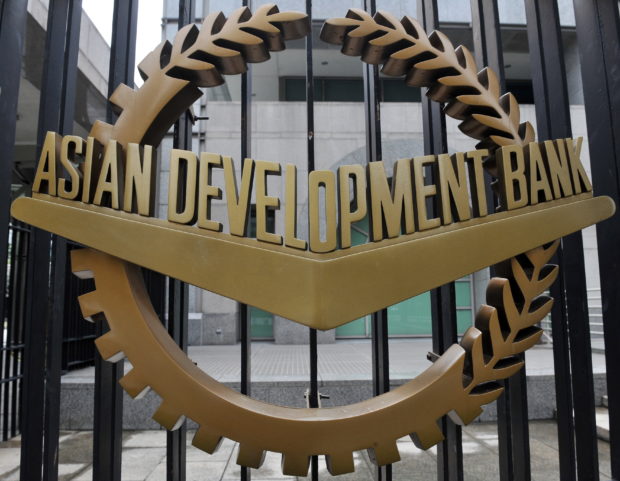
A picture shows the logo of the Asian Development Bank (ADB) displayed outside its headquarters in Manila on September 2, 2010. Photo by TED ALJIBE / AFP
MANILA -Motorists may in a few years be zipping across Manila Bay, shuttling between Bataan and Cavite with a quick bound along the shallows near Corregidor Island, as the Asian Development Bank (ADB) has approved financing of up to $2.1 billion for the Bataan-Cavite Interlink Bridge (BCIB) project.
One of the Philippine government’s flagship infrastructure projects, the BCIB involves building a 32.15-kilometer “climate-resilient” bridge across the Bay to help decongest Metro Manila and enable greater mobility of people and goods, and enhance economic productivity.
To benefit from the BCIB are the country’s economic powerhouses — Metro Manila, Central Luzon and Calabarzon—which together represent 60 percent of the country’s total output.
READ: DPWH ramps up P175-B Bataan-Cavite Interlink Bridge work
Scott Morris, ADB vice president for East and Southeast Asia, said the BCIB was the latest installment in a package of infrastructure projects that the multilateral lender supports.
Railway projects
The other projects include the South Commuter Railway and Malolos Clark Railway which are in progress, as well as two other projects currently being prepared for financing—the Metro Manila Rail Transit Line 4 and the Laguna Lakeshore Road Network.
READ: DOTr inks contracts worth $1.87B for South Commuter Railway Project
“These projects will expand and transform the transport network in the metropolis, improve regional connectivity, and offer Filipinos access to more job opportunities,” Morris said.
The BCIB project will be financed under a multitranche financing facility, with the first tranche amounting to $650 million.
The project will cut travel time between Bataan and Cavite to 1.5 hours from five hours, and to about two hours from four hours between Bataan and Metro Manila.
READ: Bongbong Marcos: Bataan-Cavite Interlink Bridge to improve economic activity
Also, the ADB said that an updated environmental impact assessment report dated November 2023 “presents sufficient evidence and management proposals to support a conclusion that the BCIB project can be implemented as designed without generating impacts of a severity and scale unacceptable to the wide range of stakeholders who stand to be affected.”
However, the ADB added that such a statement depends heavily on thorough and effective implementation of all mitigation and compensatory measures prescribed in the environmental management plan for the BCIB. INQ